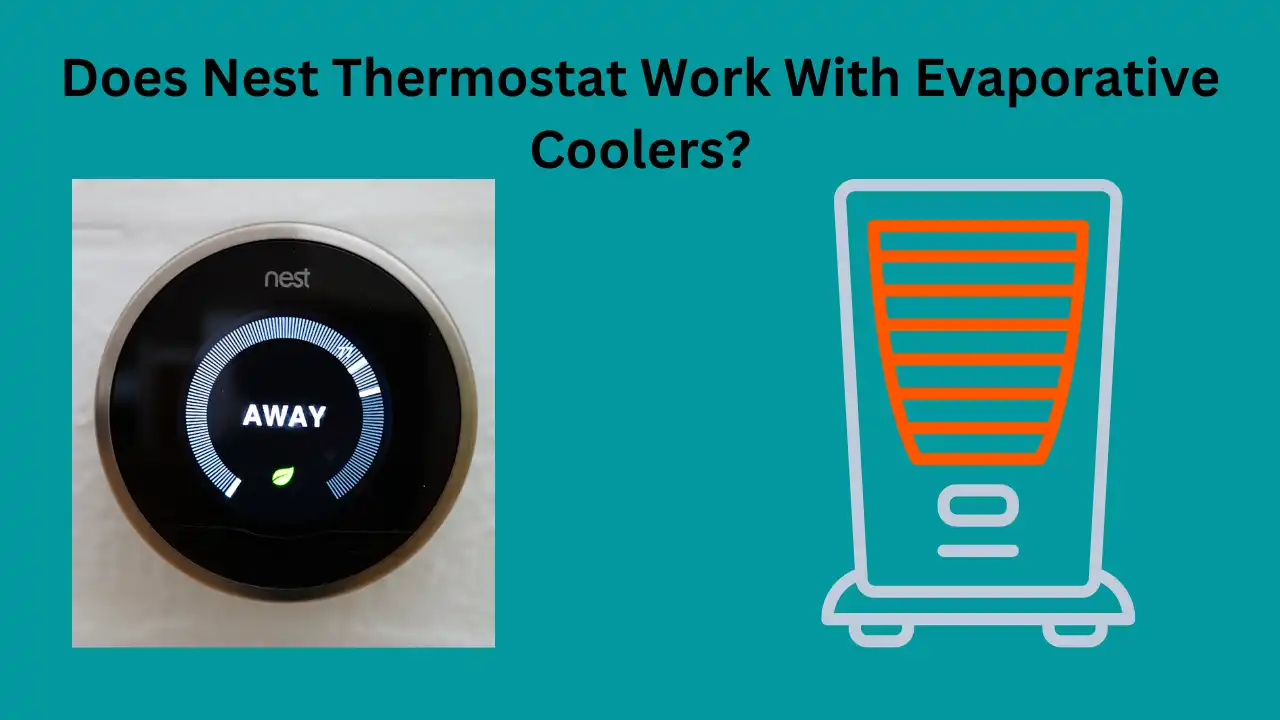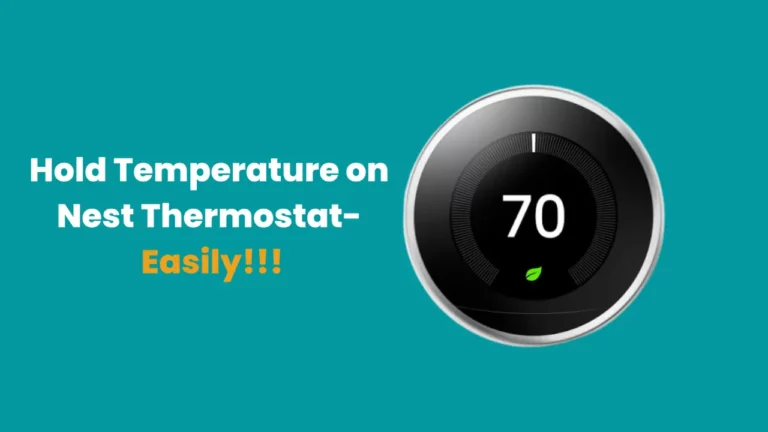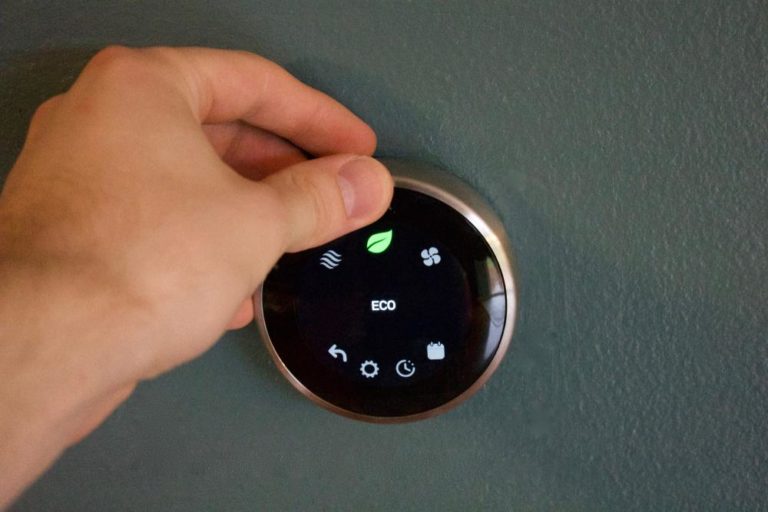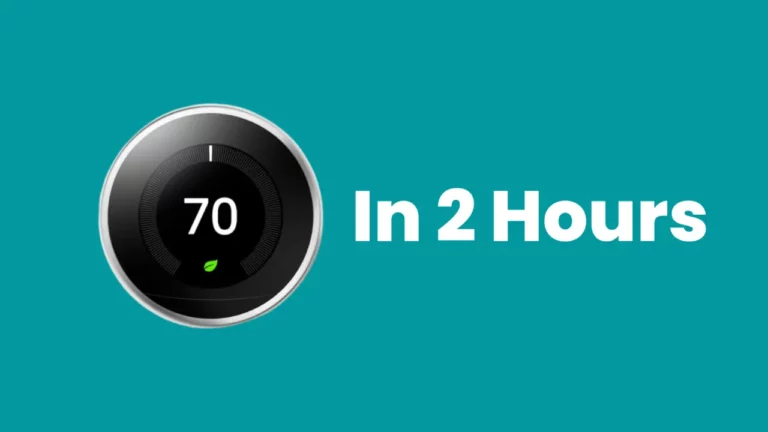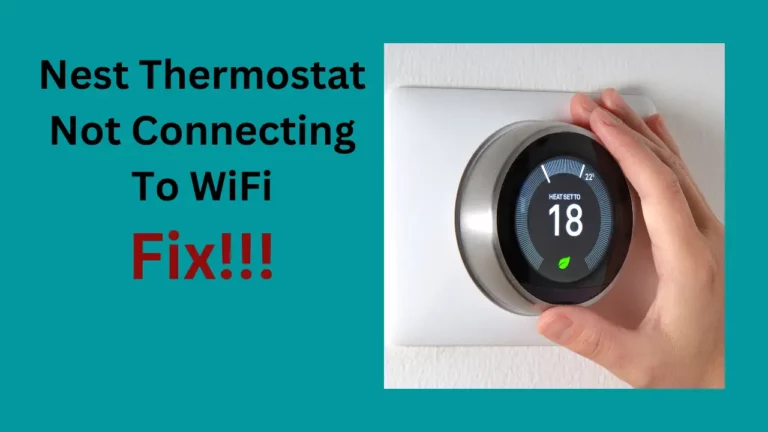The Nest smart thermostat is increasingly becoming one of the most popular choices when purchasing a new one. This is for many reasons, including that you can reduce or elevate the temperature of your house just with a finger tap using your smartphone and that the device can develop an energy-efficient plan that corresponds to your schedule and desired temperature.
In short, the Nest thermostat is compatible with an evaporative cooler, yet it’s imperative to remember that the set-up process must be done in a secure manner. You should also be familiar with and have a decent knowledge of electric wiring systems for a successful installation.
It is an excellent choice to use an evaporative cooler at first, then to top it off, using a Nest thermostat will save you a lot of electricity costs. Evaporative coolers are environmentally friendly device that consumes less power. According to Nest, the thermostat may save heating and cooling costs for the average house by 10% to 12%.
But make sure the Nest thermostat you choose is compatible with your HVAC system before purchasing it. If you did the installation without proper research, you could have problems with the functioning of your evaporative cooler.
A professional must assist you in selecting a compatible thermostat and manage the installation of your Nest thermostat.
If you have an evaporative cooler at home and want to know whether a smart thermostat can work with it, then this article contains your answers in detail.
What Does Evaporative Cooler Mean?
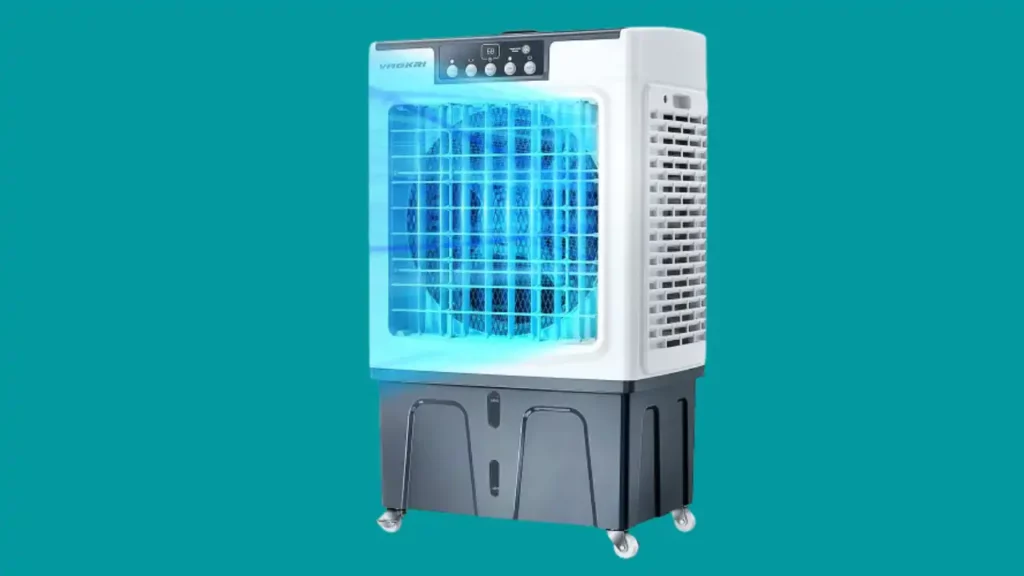
An evaporative cooler is an air conditioning unit that utilises water and the heated air in the room to generate cold air, which consumes less energy than an air conditioning system since it only has two essential components that require power: a pump and a fan.
It works because the water used in the cooler becomes vapours through evaporation. As it does so, the water’s highest-energy particles depart first, resulting in a temperature reduction.
The purpose of evaporative coolers is to disperse evaporated water through the air. Water must be available continuously to retain the pads moist and the environment cool.
This low-cost form of climate management cools and provides moisture to the space or surrounding region. Since evaporative coolers consume little energy, they are a popular environment-conscious choice for homes.
Types of Evaporative Cooler
There are two types of evaporative coolers i.e, a direct evaporative cooler and an indirect evaporative cooler.
- Cooling a room or space efficiently can be daunting, yet direct evaporative cooling provides an effortless and straightforward solution. By releasing humidified and cooled air directly into the area that needs to be cooled, you can achieve desired temperatures with ease.
- Instead of traditional air conditioning, an indirect evaporative cooler works by drawing in dry outside air and humidifying it before releasing the cooled, moistened air into your space. The used air is then expelled outdoors where it belongs.
Benefits of Having a Evaporative Cooler Thermostat?
Having an evaporative cooler installed at your home is a fantastic way to maintain cool, fresh air indoors, especially while the windows are open.
These evaporative cooling systems have several benefits:
They consume 60 to 80 per cent less power than air conditioners.
- A single evaporative air cooler can bring down the temperature of an entire home or workspace with comparatively lower electric power.
- It requires very little installation space thanks to its ground-breaking directly linked motor technology.
However, a swampy or marshy smell may appear if they are not regularly maintained and cleaned. You can prevent this problem by cleaning the pads at least twice during the season.
Can You Use a Nest Thermostat with an Evaporative Cooler?
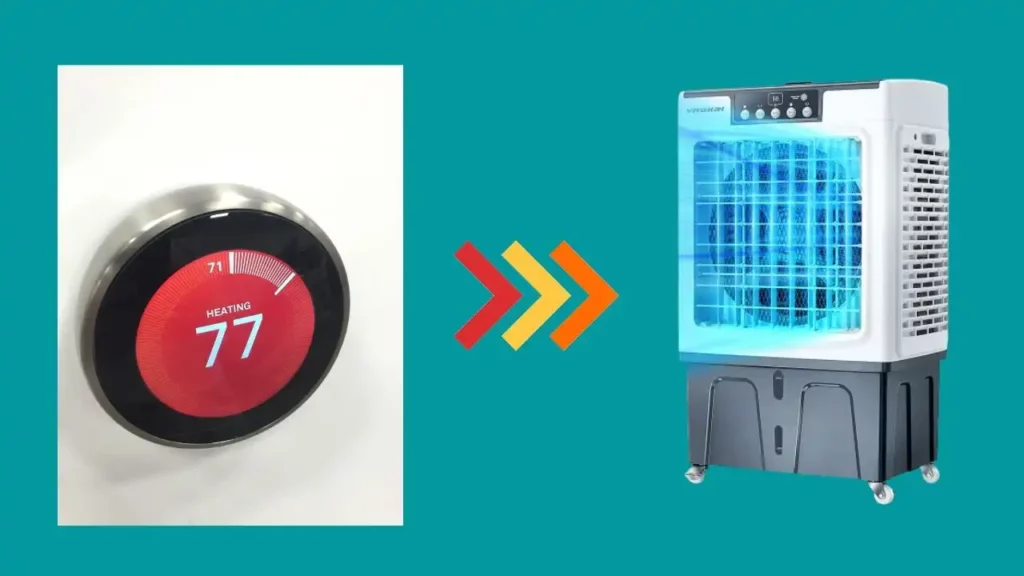
A Nest thermostat can be configured to work with an evaporative cooler, though it requires a lot of added wiring and installations, and in most cases, you need help.
So, you must be ready to call an HVAC expert to do it for you. It is more complex than tweaking some settings on the thermostat.
But if you choose to do the installation yourself, always prioritise your safety when working with electricity. Use non-conductive instruments to avoid any electric hazards, and be careful to turn off the required circuit breakers before you begin.
When you start with the process, it is essential to ensure that there can be a transfer of electricity between the two systems; a spdt relay is, therefore, the first item you’ll need. It is because most evaporative coolers use 115 or 120V, while the Nest thermostat uses 24V.
The installation process is even simpler if you install a evaporative cooler thermostat already configured to function with your evaporative cooler.
All you have to do in such a situation is label the wires and make the connections by following the guide.
If this is your first smart thermostat installation, you should do some research to find the ideal configuration for controlling whatever functions your evaporative cooler offers.
This is not very simple, but if you can follow the installation guide and are good with electrical work, you can self-attempt it.
I still advise calling a professional for wiring and electrical systems installation to avoid making mistakes.
Can You Control a Swamp cooler with a Nest Thermostat?
You can control a swamp cooler with a thermostat but with a conventional swamp cooler controller:
- you have to adjust the fan speed manually,
- turn the cooler on and off, and
- set the pump to wet the pads.
You won’t have to monitor the temperature and other configurations with the Nest thermostat.
For instance, you won’t have to operate as with a conventional controller, i.e. if it becomes too warm, you won’t have to turn on the pump, wait for the pads to become moist, and then turn on the fan and turn it down if it becomes too cool.
With a smart thermostat, you can do all this with a smartphone or auto-schedule the temperature on the thermostat.
You can modify the temperature the way you want using a Nest thermostat.
If you use a Nest Learning thermostat, then, after some time, the swamp cooler starts running on its own until a suitable temperature is reached as it learns the machine’s behaviour based on how settings on it are made.
The fan will operate automatically until that temperature is reached to cool the room based on the average temperature used on the device. (1)
Is the Nest Thermostat Compatible with My Air Conditioner?
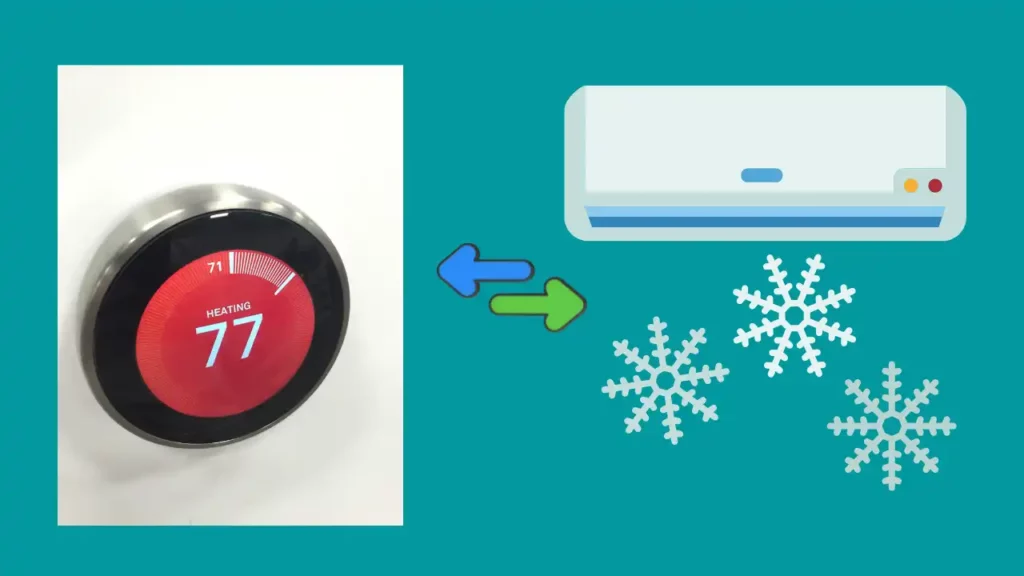
It’s good to go through Nest’s compatibility checker to self-guarantee that Nest can perfectly operate with your heating system and cooling system before purchasing a Nest thermostat.
The checker on Nest website will walk you through the compatibility test and further inform you about the wiring throughout the setup process if it confirms that your AC is compatible with the Nest thermostat.
Usually, Nest thermostats are designed to work with a variety of 24-volt systems, even earlier generations. Many home heating and cooling systems and devices, including heat pumps, furnaces, and air conditioners, are compatible with the Nest Learning Thermostat.
It also functions with dual-fuel equipment such as those running on electricity and gas both, extremely energy-efficient multistage systems, humidifiers, and dehumidifiers.
You’ll likely need a contractor or a professional to finish the intricate wiring and installation process if you wish to use your Nest thermostat to work with some or many such devices.
At What Temperature do Evaporative Coolers Become Ineffective?
Evaporative coolers are most effective when the relative humidity of the air is below 60%. As the humidity level rises, evaporative coolers become less effective. Once the relative humidity exceeds 75%, they become almost totally ineffective in terms of cooling power. This is because, at higher humidities, there is not enough moisture to absorb from the air to cool it.
Additionally, at higher humidities, the air itself is already saturated with moisture from the atmosphere and will not be able to absorb more moisture from the evaporative cooling process. Therefore, for an evaporative cooler to be effective, the relative humidity should stay below 75%.
In terms of temperature, evaporative coolers will still work at higher temperatures. However, their efficiency in cooling the air decreases as the temperature rises. This is because hot air has a lower capacity to absorb moisture than colder air.
Therefore, it would be best to keep the room temperature below 80°F (27°C) for optimal performance when using an evaporative cooler.
Can You Use a Nest Thermostat with an Air Conditioner?
The Nest Thermostat is compatible with most conventional air conditioning systems, so it should work with your system without any issues. It will allow you to set the desired temperature for your home and adjust the cooling accordingly.
The Nest Thermostat comes with a variety of features to help you save energy and money, such as learning your behaviors and adjusting the cooling system accordingly. So overall, it is a great option for those looking to upgrade their air conditioning system.
Conclusion
An evaporative cooler is an eco-friendly alternative to an air-conditioning unit. It lowers the air temperature of the premises by absorbing heat from the atmosphere. An evaporative cooler can be equipped with a smart thermostat like a Nest thermostat to control the house’s temperature and increase its efficiency by automatically shutting off when the air reaches the appropriate temperature.
If you have an evaporative cooler at home and are concerned about whether a smart thermostat would work, rest assured because your Nest thermostat is perfectly compatible with swamp coolers.
All you need to do is to locate an appropriate location for the thermostat control, connect an electrical box, attach the mutual connection, and join the thermostat’s wires. You are set to control your evaporative control using a Nest thermostat.

